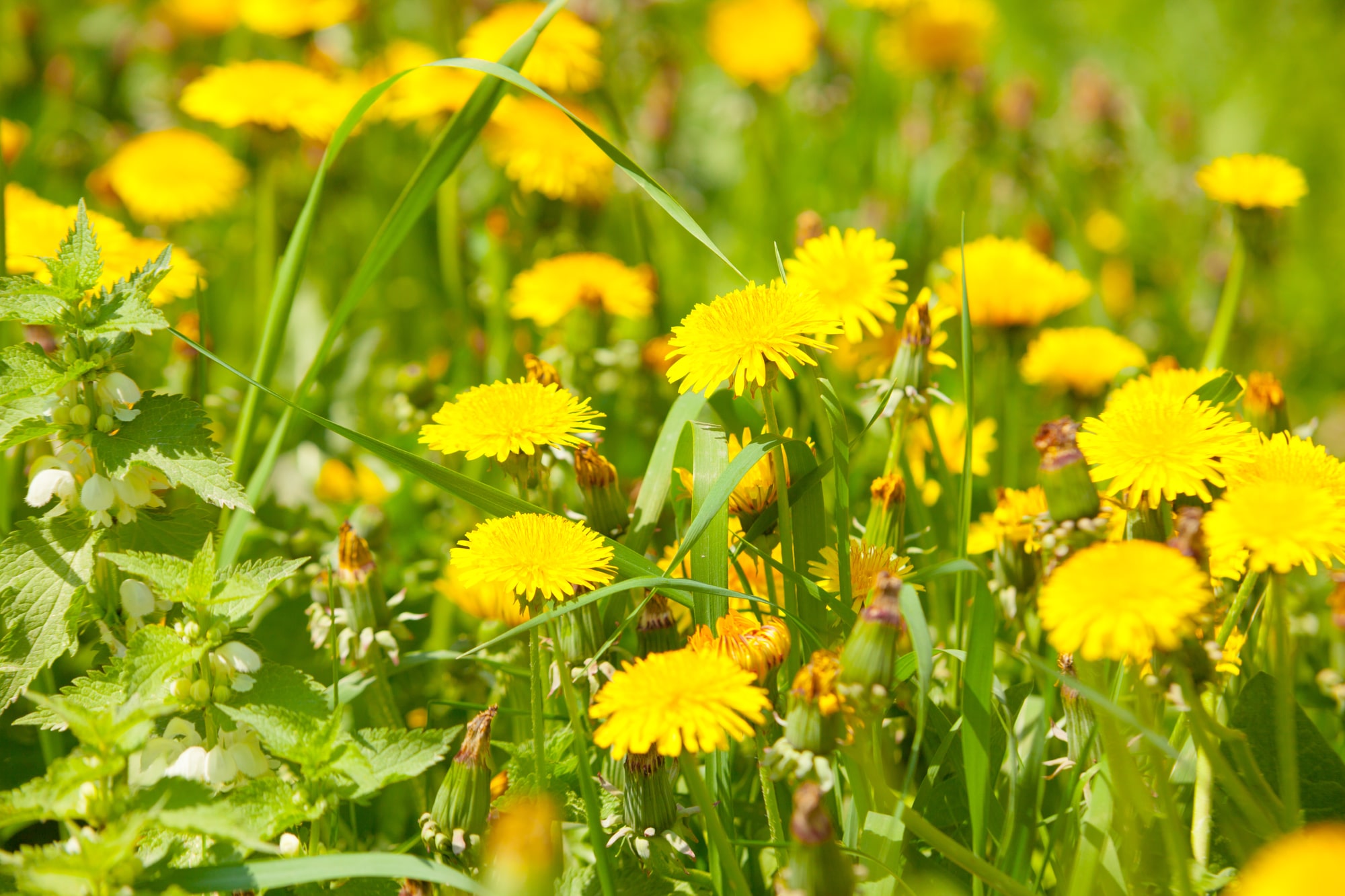Dandelions often get a bad rap. Yes, they are an invasive species that tend to spread quite quickly, but they are also a really useful plant. This is because there are many health benefits of Dandelion! Here’s the low-down on dandelions and why I think they are one of the most underrated little weeds.
A Bit Of History…
Did you know that dandelions are actually thought to have been brought to America by early European settlers in the 17th century? Yes. That’s right. The early Europeans leaving their countries thought dandelions were so important that they brought the seeds with them to their new home and planted them here.
Why would they do that? Was it just for the pretty yellow colour? Probably not. Dandelions were actually an important source of food and medicine. And, since they grew so easily, the early settlers knew they’d be helpful to start them off in their new life.
Health Benefits Of Dandelion
Well first off, aside from maybe the stem, every part of the dandelion is edible and we now know that they do indeed have nutritional and medicinal properties. They have been shown to help with inflammation, digestion, cancer, the flu and diabetes, just to name a few. Dandelions are part of the Asteraceae plant family and mature dandelions consist of a strong taproot, serrated green leaves, a stem, and a bright yellow flower.
Nutritional & Medicinal Properties Of Dandelions
Taproot
The strong taproot of the dandelion is what can drive gardeners crazy since it makes it hard to uproot this tenacious little plant. The best time to harvest the root is in the spring or fall when the soil is moist. Once you do get a hold of the root, it is very much worth the effort. The bitter root is a great source of inulin helping to support the digestive tract and liver in natural detoxification and fat metabolism.
One of the easiest ways to prepare the root (and extract that inulin from it) is as a tea. But, it can also be prepared as a tincture (alcohol extract) or decoction (boiled). The chopped up root can also serve as a great coffee substitute.
Fun fact: In Traditional Chinese Medicine, spring is the season of the liver. How convenient that an herb that supports the liver grows so abundantly during this time!
Leaves
The leaves are high in nutrients like vitamin A, iron, phosphorus, calcium and potassium. They also taste great in salads and help promote healthy digestion. If you’re planning on using the leaves for a salad, they are best harvested in the early spring, before the plant begins to flower.
Once the plants start flowering, the leaves become more bitter. This is when they are typically used in teas or tinctures, as their diuretic properties make them great for kidney support. These diuretic properties are what can make dandelions useful in treating things like urinary tract infections (UTI’s) or kidney stones.
The Flower
The flower is highest in antioxidants known as polyphenols. This can be helpful in the treatment and prevention of inflammation and cancer. The flowers can also be consumed in so many fun ways. My favourite way to eat the flower is in cookie form. Click here for my recipe!
Want more information about the health benefits and additional recipes? Click here to read, “Don’t Pull Out That Weed! All About The Cancer Fighting Medicine That’s Growing in Your Yard”.
Be Safe!
Dandelions are not likely to cause harm when eaten as a food (unless you have allergies!) However, as we start getting into teas and tinctures, their medicinal properties become more potent. In this way they do have the potential to interact with other medications and would not be safe to consume while pregnant or breast-feeding. Always make sure you’re consulting your naturopathic doctor or herbalist before trying any herbal medicine. Click here to find a doctor near you.
The health benefits of Dandelion are one of many different plants that can help with healing. Do you have a health concern and are wondering if herbs and naturopathic medicine can help? Get in touch. I’d love to chat.
Sources
1. “Taraxacum Officinale Complex .” Invasive Species Compendium, CAB International, 2019, www.cabi.org/ISC/.
2. Jackson, Bernard S. “Dandelion.” The Canadian Encyclopedia, 4 Mar. 2015, www.thecanadianencyclopedia.ca/en/article/dandelion.
3. “Dandelion.” Natural Medicines, Therapeutic Research Centre, 19 Apr. 2019, naturalmedicines.therapeuticresearch.com/databases/food,-herbs-supplements/
Felicia is a Naturopathic Doctor whose own healthcare experiences lead her to discover the benefits of naturopathic medicine. She earned her Bachelor of Science degree in 2013 at McMaster University, majoring in Biology & Psychology and completed an Honours thesis in behavioural neuroscience, investigating emotional regulation and mood disorders in adolescents. She then went on to earn her Doctor of Naturopathy degree at the Canadian College of Naturopathic Medicine in Toronto. In 2017, in her 4th year of post-graduate study, she completed a clinical internship at the Robert Schad Naturopathic Clinic, which included a pediatric-focused shift, a placement in the Queen West Community Health Centre, as well as a global clinical preceptorship in India.
Felicia’s Vision
Felicia aims to share knowledge and experiences gained on her own journey to help others on their health journeys. Gentle curiosity guides her practice and much time is spent in visits exploring symptoms and making connections to discover their root cause. Nutritional and lifestyle counseling are an important part of every treatment. Other tools Felicia uses to help ease symptoms and guide the healing process may include: acupuncture, botanical/plant medicine, homeopathy, and hydrotherapy. She also loves food and gardening and believes both are among the most powerful medicines.

